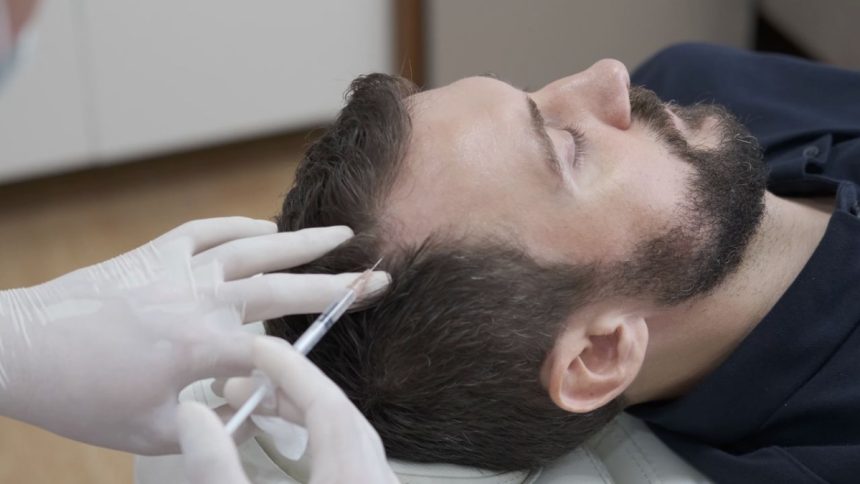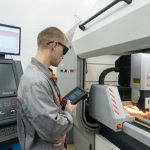Alopecia is a common concern for many individuals, impacting their confidence and self-esteem. While various treatments are available, Platelet-Rich Plasma (PRP) therapy has become a promising solution for combating alopecia. This article will delve into how PRP hair loss treatment works, shedding light on its mechanism of action and efficacy.
The Science Behind PRP Therapy
This harnesses the healing properties of platelets in the blood to stimulate hair growth and improve scalp health. Tissue regeneration and repair rely on growth factors and other bioactive proteins found in platelets. Isolating the platelet-rich plasma (PRP) from a tiny blood volume is the first step in platelet-rich plasma therapy.
Preparing Platelet-Rich Plasma
The first step is to take a typical blood sample from the patient’s arm. After collection, the blood is spun at high speeds in a centrifuge to separate its components. This separation process isolates the platelet-rich plasma from other blood components, producing a concentrated solution of growth factors and cytokines.
Administering PRP Therapy
The next step after preparation is carefully injecting platelet-rich plasma into specific areas of the scalp that are thinning or experiencing alopecia. The injections are strategically administered to ensure even distribution of the PRP across the scalp. Various bioactive proteins and growth factors in the PRP stimulate dormant hair follicles, promoting increased blood flow to the scalp, which generally benefits the follicles.
Stimulating Hair Growth
Because of the growth factors in PRP, dermal papilla cells proliferate. These cells are essential for the growth and regeneration of follicles. Activating dormant follicles and promoting the production of new cells can lead to thicker, fuller growth over time. Additionally, it helps prolong the growth phase of the hair cycle, resulting in longer-lasting results.
Improving Scalp Health
In addition to stimulating growth, it improves scalp well-being by lowering inflammation and encouraging tissue repair. The PRP’s cytokines and growth factors accelerate the healing process, helping to heal damaged scalp tissues and improve overall scalp condition. This creates a more favourable environment for follicle growth and maintenance.
Moreover, this treatment enhanced blood flow and nutrient supply to the scalp, further supporting the health of the follicles. This improved circulation helps to nourish the follicles with essential nutrients and oxygen, promoting their vitality and longevity. As a result, the hair follicles become stronger and more resilient, leading to healthier growth and reduced hair loss. In addition to its regenerative effects on the scalp tissues, PRP therapy also helps to regulate the growth cycle.
Long-Term Results and Maintenance
After undergoing the treatment, patients often have questions about the longevity of the results and what maintenance is required to preserve them. This section delves into these aspects in detail.
1. Longevity of Results
Its effectiveness can vary from person to person due to factors such as the severity of Alopecia, individual response to treatment, and adherence to post-treatment care. While some patients may notice significant growth and density improvements within a few months of treatment, others may experience more gradual results.
The benefits can be long-lasting, with patients enjoying improved growth and density for months or even years after the initial treatment. However, it’s important to note that growth is a dynamic process influenced by various factors, including genetics, hormonal changes, and environmental factors.
Patients may need periodic maintenance sessions to maintain the results over the long term. These sessions help reinforce the initial treatment’s effects and support ongoing growth and health.
2. Follow-Up Appointments
For PRP therapy to last, you must schedule regular checkups with your doctor. By scheduling these checkups, the doctor can track how far along the patient is in their recovery, assess the effectiveness of the treatment, and make any necessary adjustments.
During follow-up appointments, the healthcare provider may perform scalp examinations and density measurements to track changes in the patient’s growth and overall scalp health. Based on these assessments, they can determine whether additional PRP treatments or alternative therapies are needed to achieve the desired results.
Additionally, follow-up appointments allow patients to discuss any concerns or questions about their treatment progress or hair loss management plan. Ensuring that the treatment approach is customised to match the patient’s requirements and goals requires open lines of communication between healthcare practitioners and patients.
By attending regular follow-up appointments and staying actively engaged in their treatment plan, patients can maximise the benefits and maintain healthy, vibrant hair over the long term.
PRP hair loss treatment harnesses encourage hair growth and improve scalp health through the therapeutic qualities of platelet-rich plasma. By injecting concentrated growth factors directly into the scalp, PRP therapy activates dormant hair follicles, promotes blood circulation, and enhances the overall quality of the hair follicles. If you’re considering PRP treatment as a solution for your hair loss concerns, consult a qualified to evaluate your condition and decide if platelet-rich plasma (PRP) treatment is appropriate.
Lynn Martelli is an editor at Readability. She received her MFA in Creative Writing from Antioch University and has worked as an editor for over 10 years. Lynn has edited a wide variety of books, including fiction, non-fiction, memoirs, and more. In her free time, Lynn enjoys reading, writing, and spending time with her family and friends.















